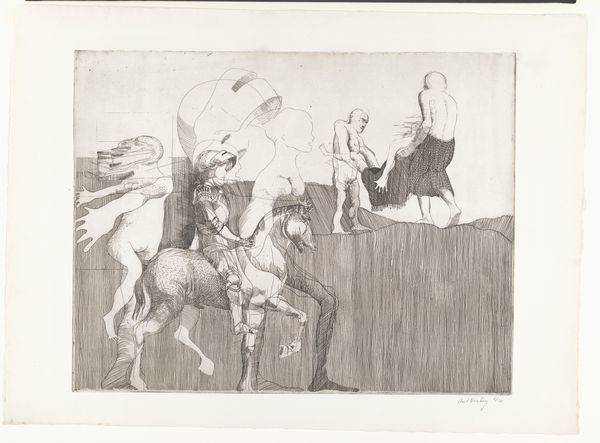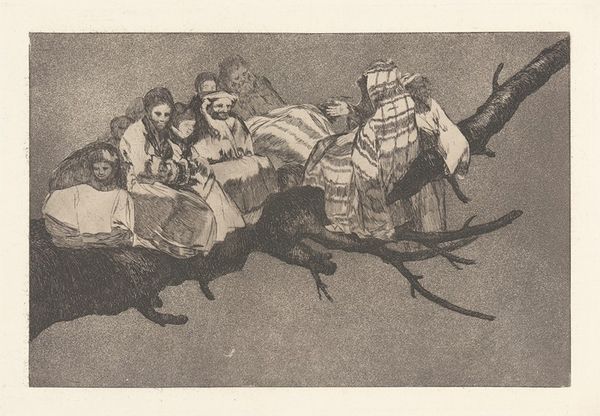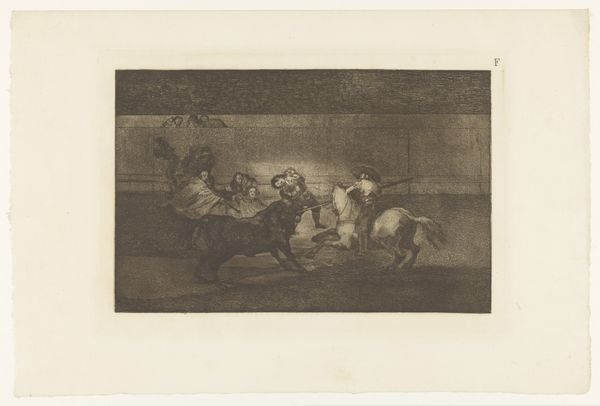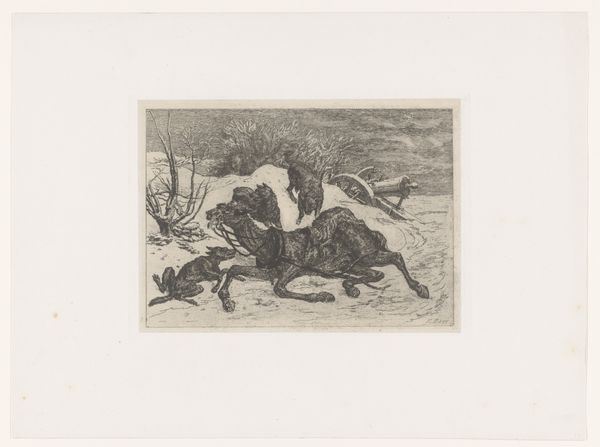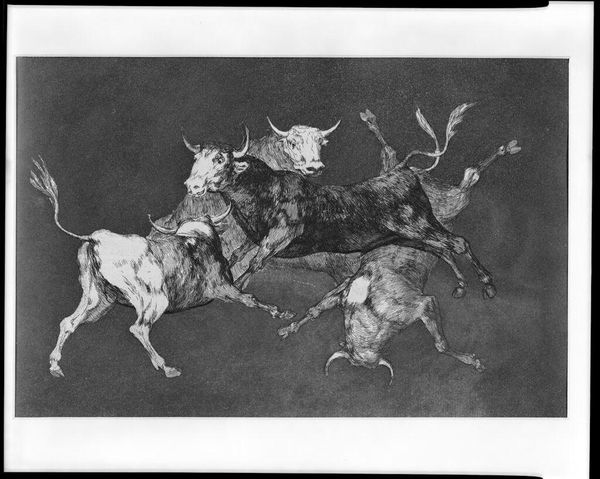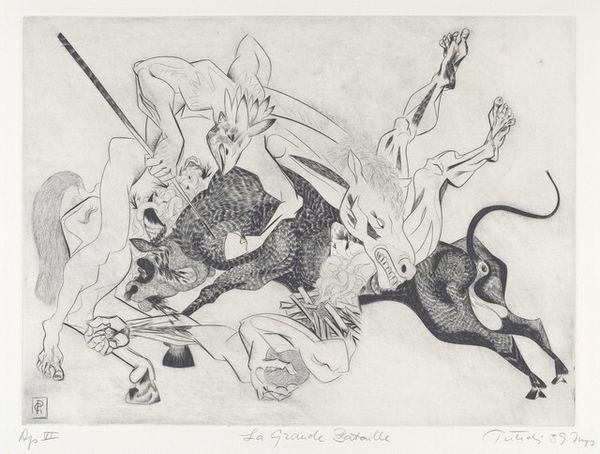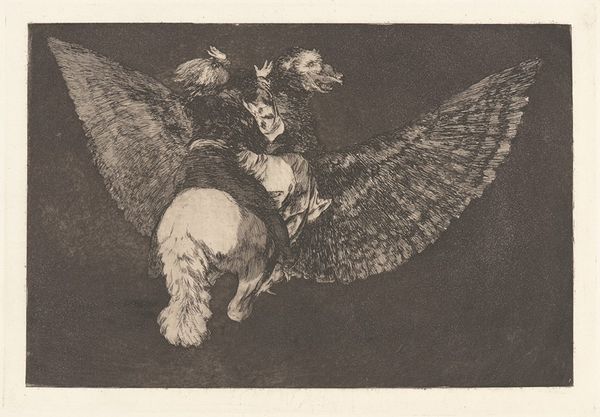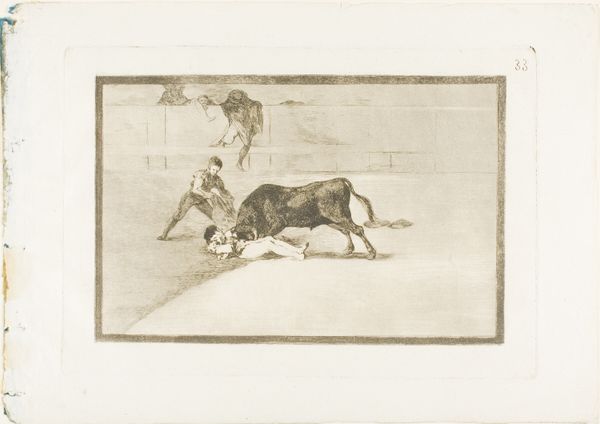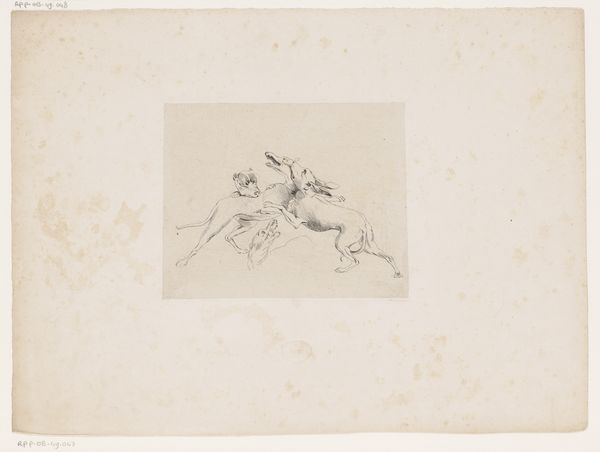
drawing, print, etching, paper
#
drawing
# print
#
etching
#
figuration
#
paper
#
romanticism
#
history-painting
Dimensions: 212 × 324 mm (image); 245 × 345 mm (plate); 283 × 375 mm (sheet)
Copyright: Public Domain
"Fool's Folly" was etched by Francisco de Goya in Spain as part of his "Disparates" series. The series, whose name translates to "Follies," is a set of aquatint prints that explore themes of irrationality and absurdity. The image shows four bulls in a chaotic jumble, their bodies intertwined in a dynamic yet disturbing composition. This print reflects the social and political turmoil of early 19th-century Spain, marked by war, political instability, and social upheaval. Goya was a court painter, but he was also critical of the monarchy. He captures the sense of disorder and the breakdown of reason in society, using the image of the bulls as a metaphor for human folly and the irrational forces driving conflict and violence. Bulls and bullfighting were also a national symbol of Spanish identity. Art historians consult letters, and political documents to find a deeper insight into Goya's work and the complex historical context in which he created it.
Comments
No comments
Be the first to comment and join the conversation on the ultimate creative platform.
